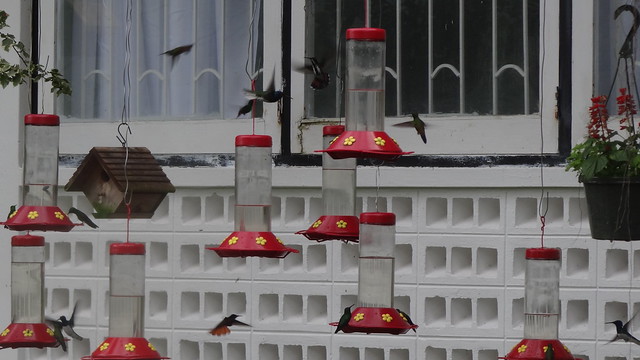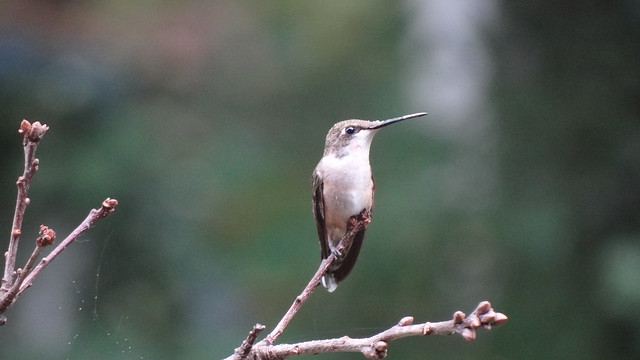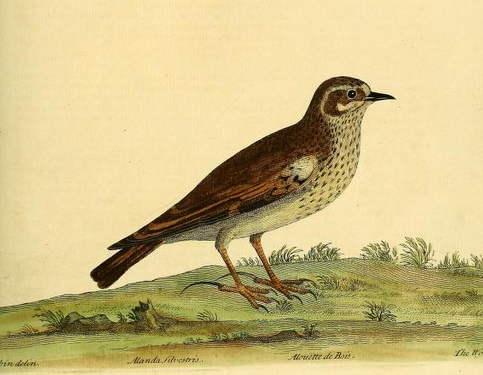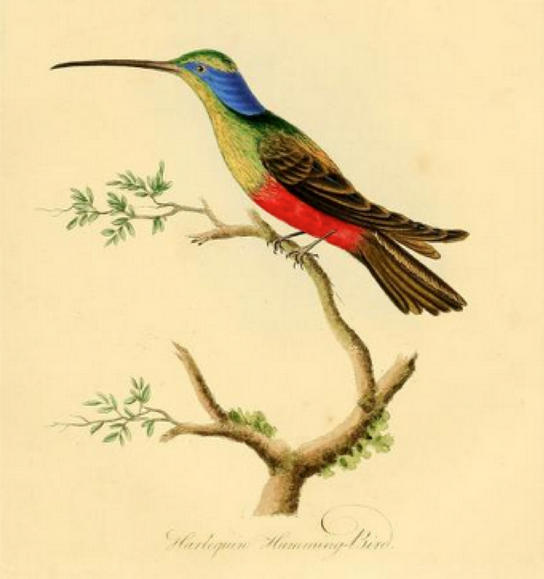A bottle, some sugar water, and something red: those are the ingredients, from Alaska to Trinidad’s Yerette and beyond. We tend to think of hummingbird feeding as a newish phenomenon, but get a load of this.
On January 15, 1698, Benjamin Bullivant wrote to the famous entomologist James Petiver with miscellaneous news from New England:
The Hum-bird I have shot with Sand, and had one some Weeks in my keeping. I put a Straw for a perch into a Venice Glass Tumbler, ty’d over the Mouth with a Paper, in which I cut holes for the Bird’s Bill (about as long and as small as a Taylor’s Needle) and laying the Glass on one Side, set a Drachm of Honey by it, which it soon scented, and with its long Tongue put forth beyond its Bill, fed daily; it muted [defecated] the Honey pure, and was a Prospect to many Comers; it flew away at last.
Guess what I’m going to be building next spring.






